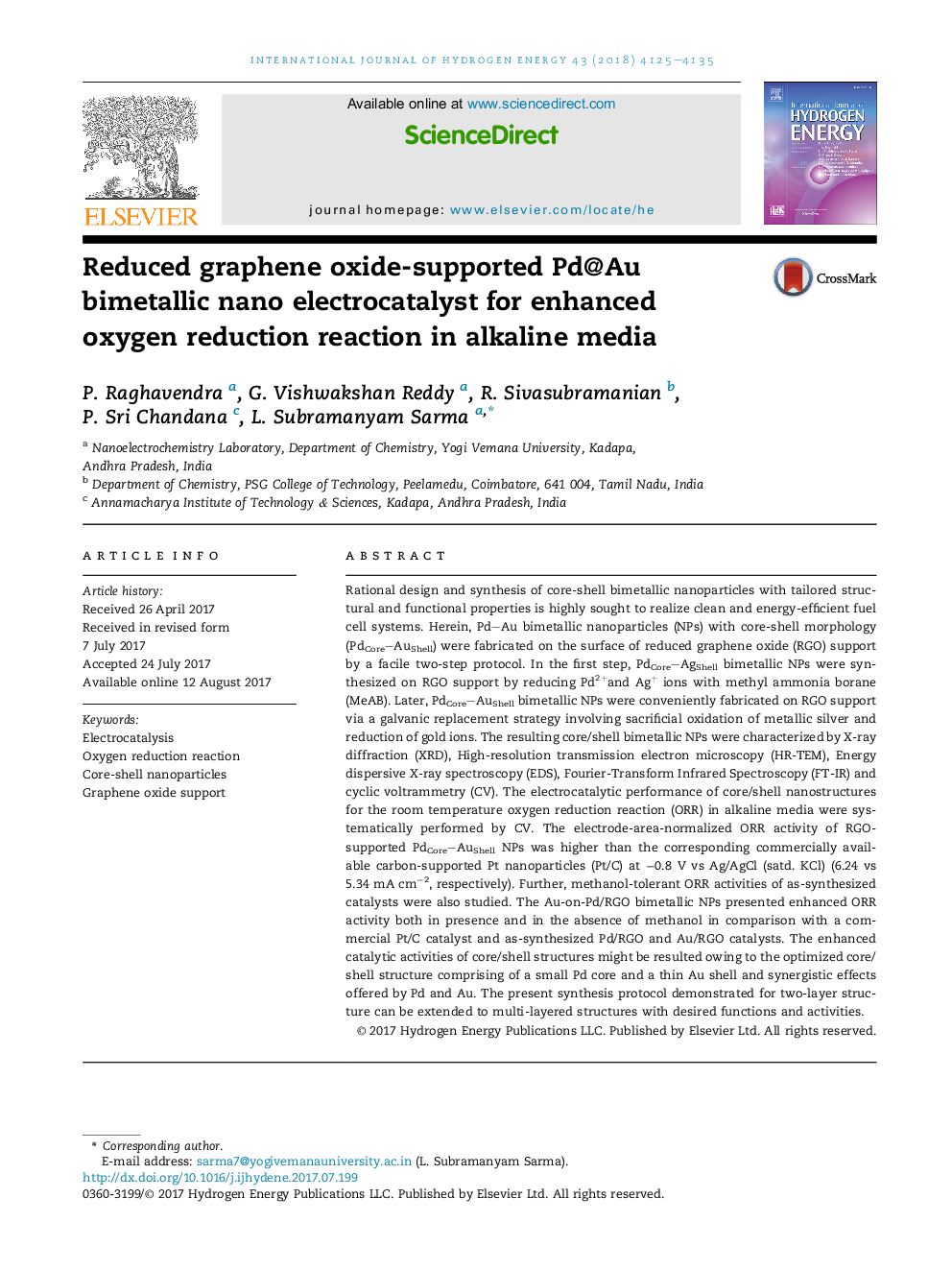| Article ID | Journal | Published Year | Pages | File Type |
|---|---|---|---|---|
| 7707555 | International Journal of Hydrogen Energy | 2018 | 11 Pages |
Abstract
Rational design and synthesis of core-shell bimetallic nanoparticles with tailored structural and functional properties is highly sought to realize clean and energy-efficient fuel cell systems. Herein, PdAu bimetallic nanoparticles (NPs) with core-shell morphology (PdCore-AuShell) were fabricated on the surface of reduced graphene oxide (RGO) support by a facile two-step protocol. In the first step, PdCore-AgShell bimetallic NPs were synthesized on RGO support by reducing Pd2+and Ag+ ions with methyl ammonia borane (MeAB). Later, PdCore-AuShell bimetallic NPs were conveniently fabricated on RGO support via a galvanic replacement strategy involving sacrificial oxidation of metallic silver and reduction of gold ions. The resulting core/shell bimetallic NPs were characterized by X-ray diffraction (XRD), High-resolution transmission electron microscopy (HR-TEM), Energy dispersive X-ray spectroscopy (EDS), Fourier-Transform Infrared Spectroscopy (FT-IR) and cyclic voltrammetry (CV). The electrocatalytic performance of core/shell nanostructures for the room temperature oxygen reduction reaction (ORR) in alkaline media were systematically performed by CV. The electrode-area-normalized ORR activity of RGO-supported PdCore-AuShell NPs was higher than the corresponding commercially available carbon-supported Pt nanoparticles (Pt/C) at â0.8Â V vs Ag/AgCl (satd. KCl) (6.24 vs 5.34Â mAÂ cmâ2, respectively). Further, methanol-tolerant ORR activities of as-synthesized catalysts were also studied. The Au-on-Pd/RGO bimetallic NPs presented enhanced ORR activity both in presence and in the absence of methanol in comparison with a commercial Pt/C catalyst and as-synthesized Pd/RGO and Au/RGO catalysts. The enhanced catalytic activities of core/shell structures might be resulted owing to the optimized core/shell structure comprising of a small Pd core and a thin Au shell and synergistic effects offered by Pd and Au. The present synthesis protocol demonstrated for two-layer structure can be extended to multi-layered structures with desired functions and activities.
Related Topics
Physical Sciences and Engineering
Chemistry
Electrochemistry
Authors
P. Raghavendra, G. Vishwakshan Reddy, R. Sivasubramanian, P. Sri Chandana, L. Subramanyam Sarma,
